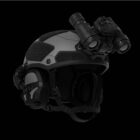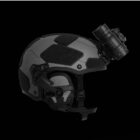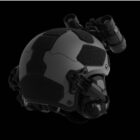SOFWERX, in collaboration USSOCOM J59 Concept Development and Integration – Experimentation (J59 CDI-E) will host a Table-Top Exercise (TTX) 26-27 July 2023, in Orlando, FL, which intends to bring together Industry, Academia, Government, and futurists in an exploration, design thinking, facilitated event to assist USSOCOM in decomposing future scenarios and missions. The theme of the TTX is “SOF Space 2040: Integrating SOF into the Space Domain”.
There have been rapid and transformative developments in the Space Domain, with many countries increasing their investments and interest in space, growth in new technologies and platforms, and significant activity from commercial players. These developments range from an exponential deployment of satellites in Low Earth Orbit (LEO); to more capable launch vehicles and spacecraft with greater payloads; and planned missions to exploit cislunar space and colonize the Moon and Mars. The number of space-related applications is far-reaching and includes communications, imaging, mining, manufacturing, exploration, tourism, scientific research, intelligence, military power, and human settlement.
The event will be a compelling opportunity for leading minds in Industry, Academia, Labs, and Government, as well as Subject Matter Experts (SMEs) to collaborate and ideate with other experts.
By participating, you will join a diverse group of experts in fields including space, defense, technology, gaming, manufacturing, robotics, science fiction, and international relations, and human factors who will gather to paint a picture of how you see the space domain in 2040, identify what challenges and opportunities could arise, and discuss how any challenges could be addressed.
You will network with other experts and use design thinking to explore concepts from future technology areas. The TTX is not limited to SOF-specific solutions; however, the outputs of the event should be aligned and/or designed to support USSOCOM operations when envisioning new mission sets for future Special Operations Forces (SOF) personnel in Space – whether on earth, on orbit, in cislunar space, on the lunar surface, or elsewhere.
If you are an expert in any of the following areas of interest or in related fields, please consider participating in the TTX.
Space Technologies
Defense Systems
Computing
Communications
Gaming
Science Fiction
Space Manufacturing
Robotics
International Relations
Futurism
Human Aspects of Space
What you will do at the SOF Space 2040 Event:
• Describe what might be the characteristics of the Space Domain in 2040 and beyond.
• Describe what might be the predominant technologies within the future Space environment of 2040 and beyond.
• Describe what might be the challenges that will be faced in space in 2040 and beyond.
• Describe what concepts might lead to solutions that address these challenges.
• Describe what planning might be done starting now to address these challenges.
• Describe what investments should or might be made to ensure that DOD has the right technologies, processes, people, and resources to succeed.
Request to attend here.
U.S. Citizens Only…Submit NLT 30 June 2023 11:59 PM ET

























































































































